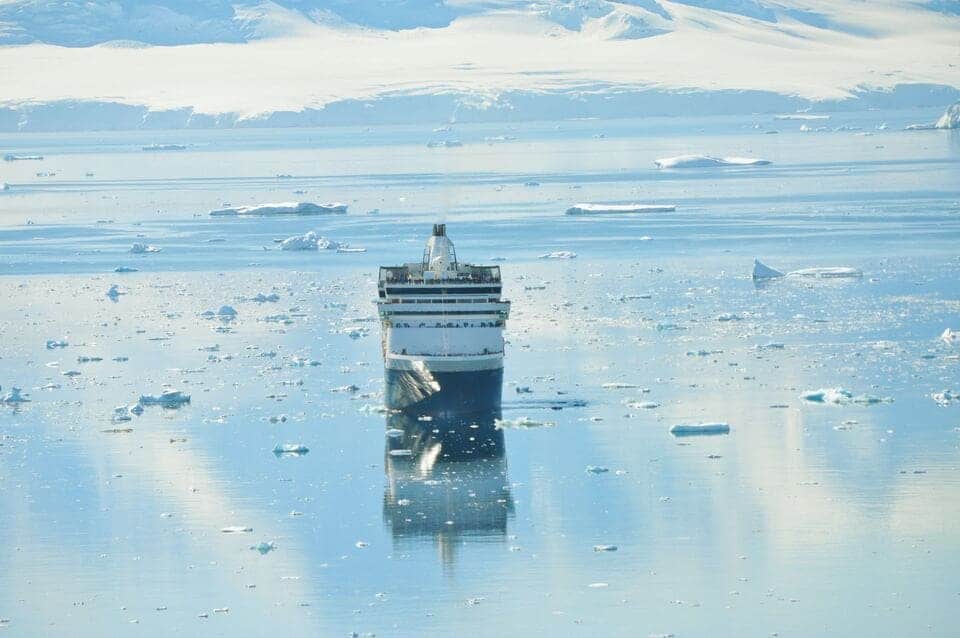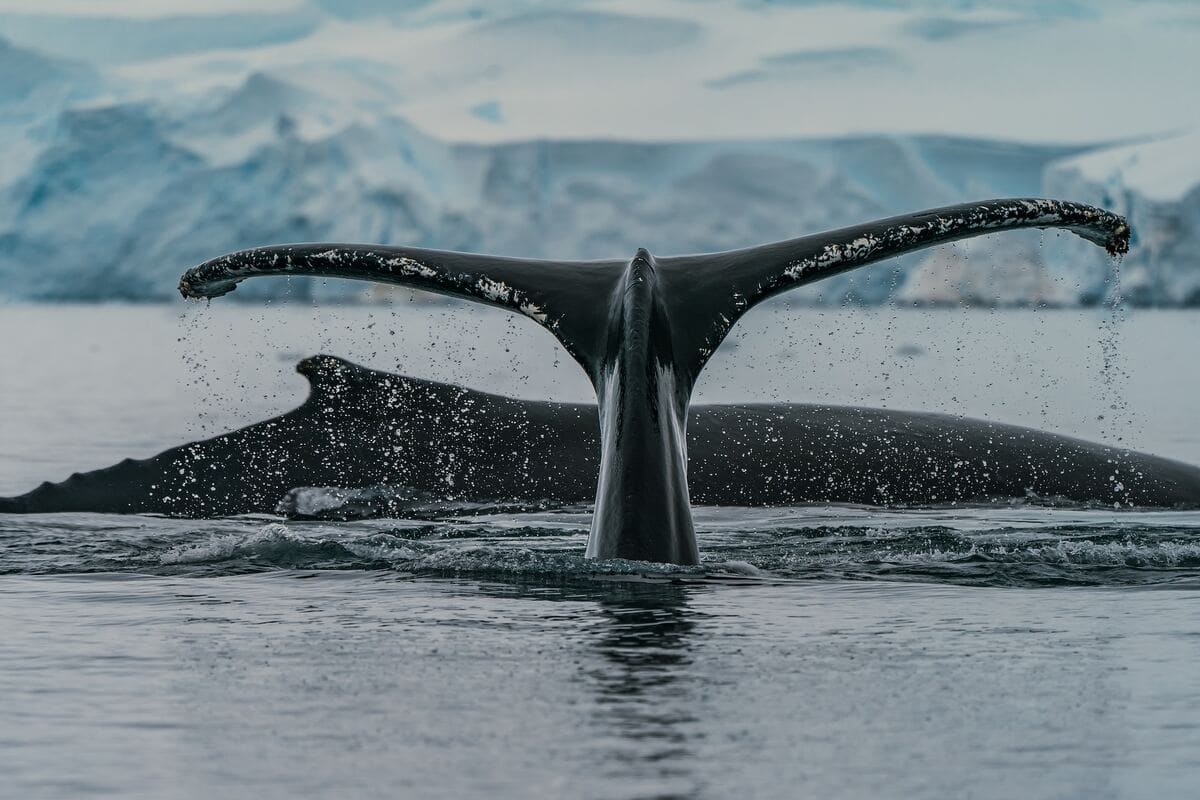Antarctica, Earth’s southernmost continent, is an icy realm that harbors a surprisingly vibrant ecosystem, defying its harsh and frigid conditions. This remote wilderness, though less diverse in species compared to other global regions, is uniquely rich in its own right, hosting a remarkable array of fauna. Most of Antarctica’s wildlife is concentrated near the coast, finding refuge where the harshness of the interior gives way to slightly milder coastal climates. This region represents a critical component of global biodiversity, offering a window into life’s resilience and adaptability in the face of extreme environmental challenges.
Antarctic Environment: A Harsh Habitat
Embarking on an Antarctic cruise unveils a world where the environment shapes life in profound ways. Antarctica’s landscape, largely sheathed in ice up to 4.7 kilometers thick, embodies the epitome of extreme. This icy desert, with its punishingly low temperatures, high solar radiation, and stark dryness, sets the stage for a remarkable ecosystem.
Approximately 98% of the continent is encased in ice, creating conditions that only the hardiest of organisms can endure. In this extreme habitat, extremophiles flourish, demonstrating remarkable adaptations. These conditions have given rise to a specialized set of flora and fauna, uniquely adapted to thrive in an environment where most life would falter. Antarctica’s severe climate and geography not only challenge life but also forge it, resulting in a biodiversity that is as unique as it is resilient.
Penguins: Iconic Inhabitants of the Ice
Antarctica is home to eight distinct species of penguins, each uniquely adapted to thrive in the continent’s rigorous conditions. These range from the diminutive Adélie to the majestic Emperor, the largest of all penguin species. The Emperor penguin, in particular, is an epitome of adaptation, surviving the harsh Antarctic winter by huddling together for warmth and breeding during the coldest months. Their large size aids in heat retention, while a sophisticated heat exchange system in their nasal passages conserves warmth.
Adélie penguins, on the other hand, exhibit a different survival strategy. They migrate northward as winter approaches, only to return early in the summer to exploit the seasonal abundance of food. Both species showcase remarkable physiological adaptations, such as increased myoglobin in muscles for prolonged dives and a counter-current heat exchange system to minimize heat loss.
Their feeding habits are a testament to their adaptability, with diets predominantly comprising fish, krill, and squid, skillfully captured in their icy habitat. These penguins’ lives are a delicate balance of feeding, breeding, and nurturing their young in an environment that is both their home and a formidable challenge
Mammals of the Deep: Seals and Whales
The Southern Ocean is a sanctuary for seven species of pinnipeds, including the colossal Southern elephant seal and diverse cetacean species. The Southern elephant seal is the largest, with males reaching up to 4,000 kilograms. Their life north of the sea ice, in breeding harems on beaches, contrasts with the Antarctic blue whale, the largest animal to have ever lived. These whales, feeding primarily on krill, migrate to polar regions in summer. Their unique adaptations, such as baleen plates for filtering food and a substantial blubber layer for insulation, enable them to thrive in the frigid Antarctic waters. These mammals, adapted to reduce heat loss and efficiently hunt in their icy environment, are fundamental to the Antarctic marine ecosystem.
The Unseen Majority: Underwater Biodiversity
Beneath the icy surface of the Southern Ocean lies a world teeming with life, constituting some of the most diverse benthic and pelagic communities. Antarctic krill, pivotal in the Antarctic food web, demonstrate extraordinary adaptations like bioluminescence and the ability to survive long periods of starvation. The region’s fish species, including the unique icefish with antifreeze proteins in their blood, contribute to a rich marine biodiversity. Various invertebrates, such as starfish and colossal squids, also play crucial roles in the ecosystem. These species, adapted to extreme cold and seasonal changes, form a complex web of life that supports the larger, more visible Antarctic fauna.
Terrestrial and Avian Life: Beyond Marine Boundaries
While Antarctica’s marine life is abundant, its terrestrial and avian ecosystems, though less diverse, are equally fascinating. Terrestrial life is largely limited to invertebrates, with the Belgica antarctica, a wingless midge, being the only true insect native to the mainland. This tiny creature exemplifies the extreme adaptability required to survive in such a harsh environment. The avian population, primarily nesting on the milder shores and islands, is rich and varied, encompassing over 100 million birds including albatrosses, petrels, skuas, gulls, and terns. These birds, thriving in an ecosystem with no natural terrestrial predators, play a crucial role in the Antarctic food web and environmental health.
Conservation Challenges and Efforts
Antarctica’s pristine environment faces significant challenges, primarily from climate change, increasing tourism, and fishing pressures. The continent’s unique ecosystems are highly-sensitive to temperature fluctuations, and the rising number of tourists and fishing activities pose risks to its delicate balance. Internationally, the Antarctic Treaty and the Environment Protocol govern activities like tourism and scientific research, focusing on terrestrial impact, while the Convention on the Conservation of Antarctic Marine Living Resources oversees marine ecosystem activities, primarily fishing.
These treaties aim to protect Antarctica’s biodiversity through principles of environmental preservation and sustainable use. However, the effectiveness of these measures often hinges on global consensus and cooperation, highlighting the need for concerted international efforts to safeguard this extraordinary wilderness.
Conclusion
Antarctica, a land of extremes, holds an irreplaceable trove of biodiversity, with its unique wildlife adapting in remarkable ways to survive in one of Earth’s harshest environments. The intricate balance of this ecosystem, from the microscopic krill to the majestic blue whale, underscores the interconnectedness of life. However, the increasing threats of climate change, unregulated tourism, and overfishing jeopardize this fragile harmony. The need for rigorous research and robust conservation efforts is more critical than ever. Protecting Antarctica’s wildlife is not just about preserving a remote wilderness; it’s about safeguarding a vital part of our planet’s biodiversity and understanding the broader implications of environmental changes on global ecosystems.
Read Next:
Bucket List Worthy Travel Destinations
Embarking On The Dream Of A Lifetime? Make Sure You Prepare
Get Travel Insurance
Unfortunately, there are a lot of things that can go wrong on any trip. Be prepared for the worst with travel insurance. We use Travelex or Safety Wing (often cheaper).
Book Flights
I use Skyscanner to find flights. I use it so much, I wrote an entire guide to finding cheap flights with Skyscanner! My second favorite site to find flights is Momondo, another great site for finding cheap flights.
Book a Place to Stay
I recommend using Expedia.com or Hotels.com for most hotel bookings. I prefer to book directly with Marriott when I stay there because of their excellent military discount.
If you prefer staying in a vacation rental instead, I recommend VRBO.
Rent Clothes
Rent clothes for your trip with Travel Style Expert for only $50 a month! The first 30 days are free!
Choose Activities and Tours
To find great activities in any area I use Get Your Guide and Viator. If we are visiting a city with lots of popular attractions I always check CityPass and GoCard to see if they have discount cards available.
When I want to book a full-on multi-day tour I use TourRadar. They’ve got fantastic weekly deals. If I am going somewhere in Mexico or the Caribbean I use Apple Vacations.
Rent a Car or Take a Lyft
More often than not Lyft is cheaper than Uber. Use my Lyft link for an $18 credit! For a car rental in any country, I recommend Discover Cars.



Leave A Comment